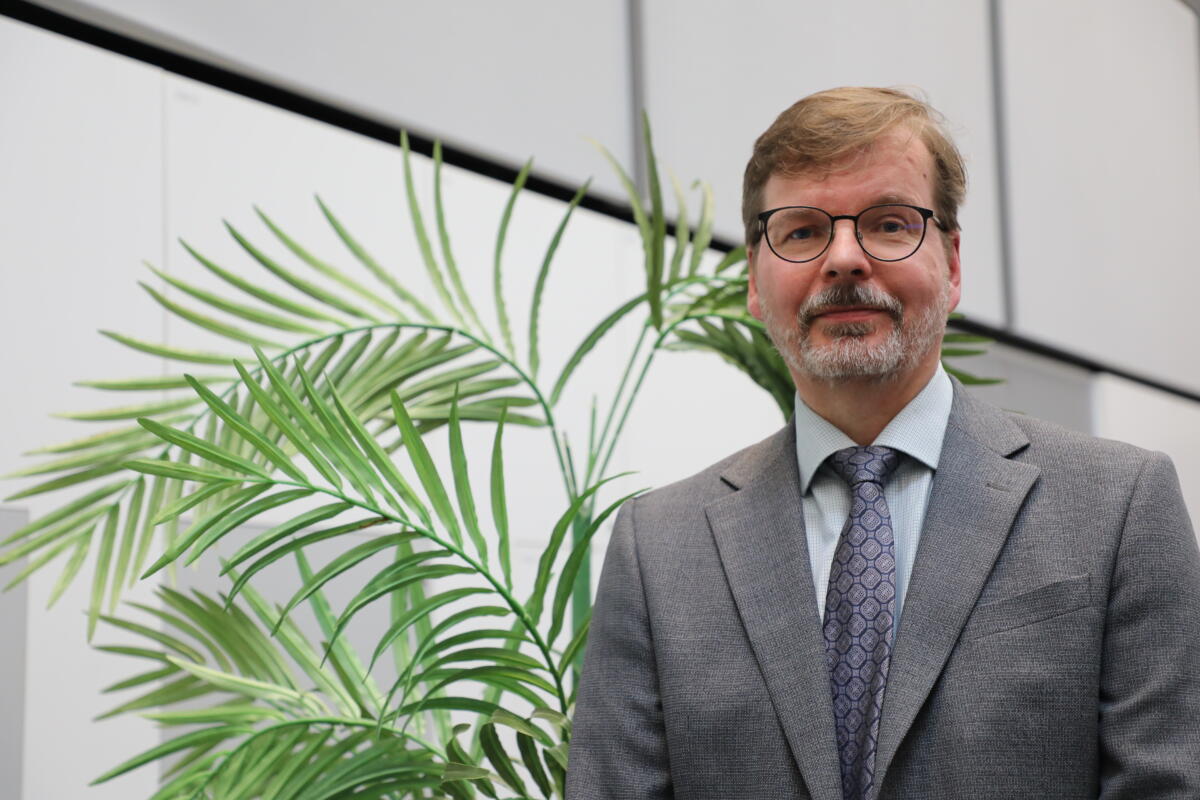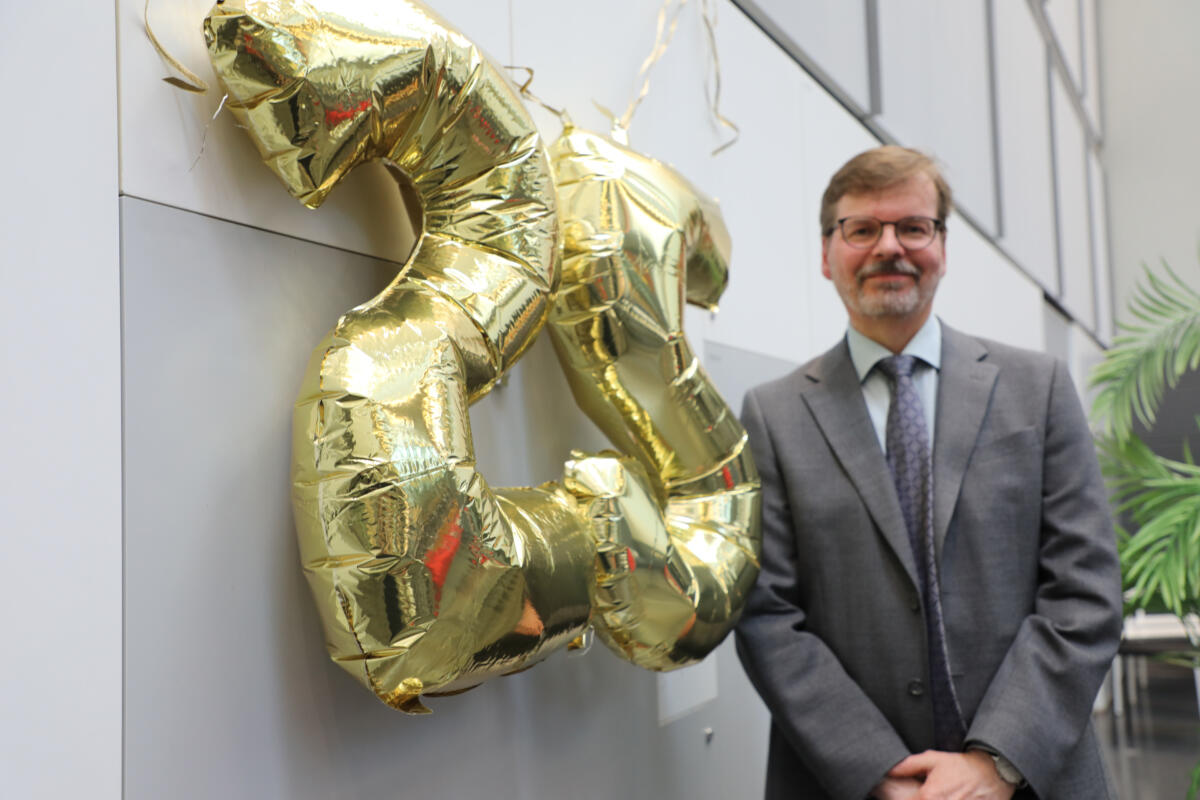Lauri Suurpää reveals how music is constructed beneath the surface through theory and analysis
Suurpää has served as professor of music theory at the Sibelius Academy for 25 years. The milestone was celebrated with a Festschrift published in his honour.

When Professor of Music Theory Lauri Suurpää began his studies at the Sibelius Junior Academy as a guitar student in 1980, it is unlikely he anticipated completing the entire arc of his academic life there, eventually becoming a professor himself. Now, 25 years after his appointment, his career is being celebrated with an international collection of scholarly articles. But who is the person behind this impressive career and in-depth research?
A legacy of “adding handles on the ball”
At the Sibelius Academy, Suurpää is known not only as a teacher of music analysis but also as a dedicated supervisor of theses at all levels. His teaching is rooted in a deep desire to understand music holistically and to guide students in formulating their own questions.
“Music analysis is not purely a technical exercise. We’re not simply looking for technically correct answers, nor are there absolute right or wrong perspectives. Music is full of fascinating layers, and our task is to bring those into dialogue with one another.”
This philosophy is marked by curiosity, unorthodoxy, and above all, the desire to listen – to music, to oneself and to others. Through thesis supervision and guiding generations of students, Suurpää has left a significant mark on Finnish music research. His aim is to help students articulate their intuitions and recognise the directions that their questions might lead them.
“Sometimes, a research topic starts out like a ball you can’t get a grip on: as a supervisor, I try to provide ‘handles’ that the student can hold onto on that figurative ball. Often, it’s a very subtle process of guiding students to refine their own thoughts.”
Stylistic composition (“satsioppi” in Finnish) and the craftsmanship of music analysis have long been central pillars of music theory education at the Sibelius Academy, making the training unique. Over the years, research has taken on an increasingly important role, Suurpää notes, and a distinct research community and tradition have developed over his 25-year professorship.
Crime novels and staves
Suurpää is especially known as an expert in Schenkerian analysis, which seeks to understand how music is structured beneath the surface. The goal is to uncover the underlying framework that supports the flow of music. These structures are depicted in analytical diagrams that show both what we hear immediately and how the music unfolds in broader arcs. As an avid reader, Suurpää likens Schenkerian analysis to literature.
“I think of it a bit like a detective novel: just as in a crime story, music carries both a larger overarching narrative and the depiction of individual events. There are events that lead somewhere, expectations arise, tensions build and resolutions are delayed. The purpose of analysis is to verbalise these non-verbal experiences.”
A one-institution man
“It would be impossible to imagine my work without the Sibelius Academy,” Suurpää says. And indeed, his career path is uniquely bound to a single institution – first as a student, from the Sibelius Junior Academy to university-level studies, then to working as a teacher and professor.
“At the Sibelius Academy, you can complete this entire path at a professionally demanding and high level – that’s quite rare,” he remarks.
The academy has become both a vital community and a research platform for Suurpää. Chance also played a part in shaping his focus within music theory. From early on, his academic gaze was internationally inclined, particularly towards the United States, where he built important professional networks.
“In 1989, I completed the A-level guitar course and then applied to study music theory. That same autumn, Carl Schachter came from New York to give a two-week course in Schenkerian analysis. That course launched a collaboration that continued through correspondence. Eventually, I went to New York as part of my doctoral studies. Without Schachter’s course, I probably wouldn’t be where I am today.”
A touching Festschrift
The volume honouring Suurpää’s career, Encountering Music Analysis: Structure, Performance, Text and Beyond, is both a scholarly publication and a personal tribute penned by his colleagues. Contributors include prominent international theorists, and the topics of the articles range from Scarlatti to Pärt – reflecting the kind of polyphony Suurpää himself values.
“The publication evokes warm and humble feelings,” he says. “The fact that so many colleagues chose to dedicate their time and thoughts to this book feels incredibly meaningful. You can hear the friendship and the authors’ own voices in the writing.”
Keys to a thriving community
Suurpää has played a significant role in shaping the atmosphere and community of composition and music theory education at the Sibelius Academy over the decades. What makes a good community and a strong sense of collegiality? Many have entered the field at a very young age, having made their career choice early on. For Suurpää, commitment and genuine interest in music are essential.
“We’ve been fortunate to have great people leading the composition and music theory programmes – people who are willing to listen and make things happen. And perhaps most importantly, people feel that they can have a say in what they do. That fosters commitment and community spirit. At the core has been the idea that if we engage in research, certain methods – and a kind of craftsmanship related to them – are essential.”
Students have evolved, as well, and thesis topics have become more diverse.
“Students support one another, they’re focused, and they carry out projects with clear determination. Their interests have broadened, and they’re more willing to bring forward what they truly want to explore. I think that’s a positive development: these days, students may feel more strongly that they’re part of a shared research framework. Perhaps we’ve succeeded in creating a community where they feel empowered to pursue what fascinates them and to ask their own questions.”
A hope for polyphony
According to the professor, what is the greatest and perhaps most valuable recognition of a long career?
“Perhaps it’s that the work I’ve done has, in some way, been absorbed into the ongoing discourse in the field.”
Suurpää hopes that the future of music will be pluralistic and accepting of diverse perspectives.
“The impact of my research on the wider society is somewhat indirect. In today’s world, I think it’s critically important to be aware of our history and traditions – how our communities and societies came to be the way they are. Understanding why art and music have always been essential to humanity is deeply significant. Music analysis has a role to play in preserving that awareness.”

“Encountering Music Analysis: Structure, Performance, Text and Beyond – Festschrift for Lauri Suurpää” was published in May 2025 to honour Suurpää’s 25 years of service as Professor of Music Theory.